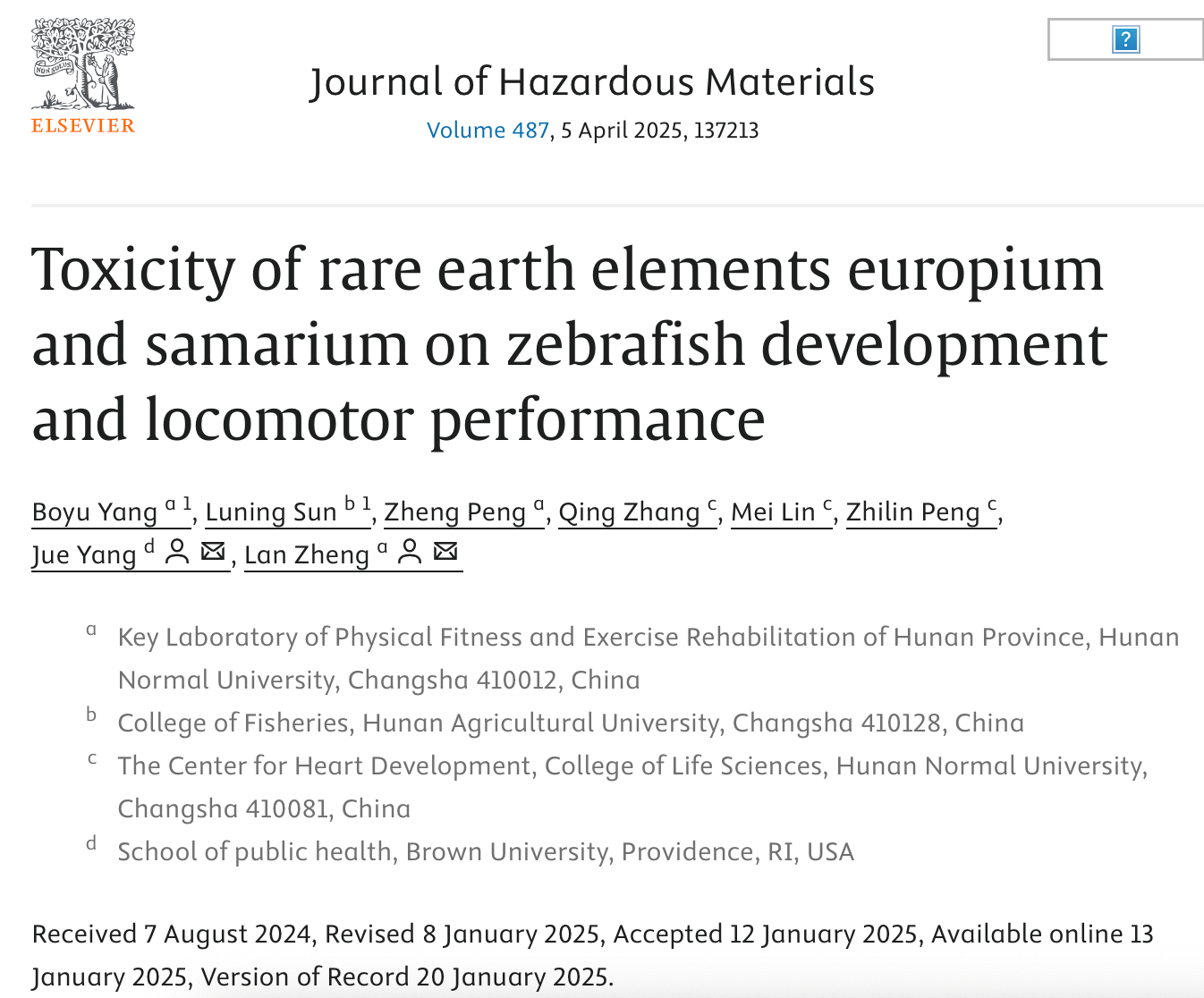
A notable study titled "Toxicity of rare earth elements europium and samarium on zebrafish development and locomotor performance" has been published in the Journal of Hazardous Materials, a leading journal in the field of environmental science and toxicology, classified as JCR Q1, shedding light on the developmental and locomotor impacts of rare earth elements (REEs) on zebrafish. This research, conducted by a dedicated team from Hunan Normal University, investigates the effects of europium (Eu) and samarium (Sm) exposure on zebrafish embryos and larvae, providing insights into the potential environmental and health risks associated with these elements. Jue Yang and Lan Zheng are the co-corresponding authors of this paper, while Boyu Yang and Luning Sun is the co-first authors.
Exposure to Eu and Sm induced a range of developmental abnormalities in zebrafish, including reduced heart rate, growth inhibition, and morphological deformities such as kyphosis, pericardial edema, and yolk sac edema. RNA-Seq analysis revealed significant alterations in gene expression patterns following Eu and Sm exposure, with affected genes linked to critical biological processes and functions, including DNA replication, cell cycle, and apoptosis. Zebrafish larvae exposed to Eu and Sm exhibited significant reductions in burst and spontaneous swimming behaviors, characterized by decreased movement distance, frequency, and velocity. These impairments were associated with the downregulation of the oxidative phosphorylation pathway, crucial for cellular energy production. Eu and Sm exposure adversely affected the development of digestive organs, including the liver and exocrine pancreas, as evidenced by reduced organ size, altered gene expression, and impaired function.
This research provides critical insights into the developmental and locomotor toxicity of Eu and Sm in zebrafish, highlighting the need for further investigation into the health risks of REEs. The findings underscore the importance of environmental monitoring and risk assessment strategies to mitigate the potential adverse effects of REEs on ecosystems and human health.
Full-text article link:https://pubmed.ncbi.nlm.nih.gov/39837035/
Editor: Peng Xiyang
First-Round Review Editor: Guo Enkai
Second-Round Review Editor: Bashir Mehvish